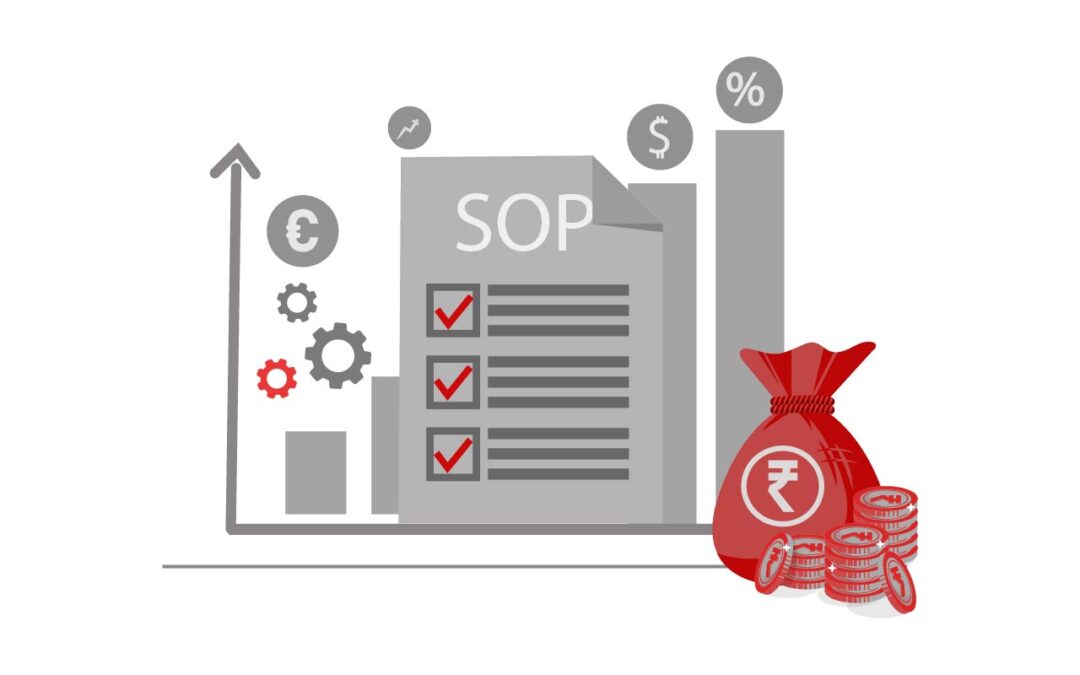Businesses, especially startups, depend on external capital to fund their establishment costs and expansion projects. These investments usually come from financial institutions, other businesses, and HNI individuals. Unlike professional funding entities or venture capitalists, there are also wealthy private investors also known as angel investors. In return, these investors expect to make a good profit. They are prudent with which businesses they invest their money. The onus is on the investment-seeking businesses to convince these investors about the potential of the business ideas and projects. In doing so, a very important element is to showcase the merit of the business processes and operations. The operations of a business affect its ability to achieve the planned goals and objectives. And Standard Operating Procedures (SOPs) play a crucial role in this. Let us see how SOPs come into the picture frame of business and startup funding.
Alignment between Business Processes with Business Objectives
The business goals and objectives are long-term and big-picture scenarios. The building blocks of achieving these begin at the operations level. It is necessary to align the business processes and operations with the business goals and objectives. Only then, the intended results are possible. SOPs make it possible to merge processes with objectives. SOPs define every operational activity with a precise definition of the required standards of performance and output. For example, if a brand wants to implement a no-questions-asked return policy, then customer support should not be asking questions. Customer feedback may be sought but questioning should be avoided. The element of questioning customers on returns could be eliminated from the SOPs of the return process. Knowing how a business is going to work its way out and stick to its bigger business goals is a confidence booster from an investor’s perspective. This effort should be visible in the startup pitch deck or the seed funding proposal.
Operational Accuracy and Efficiency
Investors are not only interested in the alignment of the business processes with the business objectives but also in the efficacy of the processes. Accurate and efficient processes indicate resource optimisation and cost savings in achieving the business objectives. Also, there are lesser operational mistakes. The timelines are maintained. Take the KYC process of a financial institution as an example. If the process is planned and well-defined, it is convenient for customers and employees to quickly and accurately complete the KYC requirements. If the process is not defined, the tasks may have to be repeated costing more time and money. It could also turn out to be a bad experience for the customers. SOPs ensure that everything that needs to be done in a process is defined in detail with established standards of performance and output. Investors are always more interested in businesses that operate in planned and systematic ways.
Internal Coordination
Interdepartmental conflict is not a good sign for any enterprise. It slows down work and business. As business processes often cut across functions and departments, the required internal coordination does not come by default. Overcoming this requires a deliberate effort. Processes have to be defined and mapped accordingly. The scope of duties and responsibilities of each process owner within the process must be clearly outlined. Every task owner should know the output s/he is required to generate. With SOPs, the focus is on the process and its performance. It does not matter which or how many departments get involved; the focus is always on the process. The ability to execute complex processes, as good as the simple ones, portrays a positive image of an enterprise in the eyes of potential investors.
Scalability
Every investor desires their investment to multiply or enhance in value over time. This makes them prefer businesses that not just have ideas and vision but also the operational abilities to embrace growth and expansion. When businesses adopt SOPs and consistently strive to improvise them, their processes keep on becoming more mature with time. Tested and proven processes are good for replication. For instance, if the recruitment process has consistently delivered good recruits, the same process could be replicated by the company.
Proof of Concept
By nature, we all are in love with proof and evidence. Demonstrating how something works or how it will, is much more convincing than a mere play of words riding on the high horses of assumptions. Investors also expect proof of concept, demonstration, or some kind of evidence that could convince them that the business idea or project in question is going to work when it sees the light of the day. Here, we are strictly sticking to the element of operation planning. The concept of SOP, inherently, is all about detailing and mapping. There is no other side to it. When you say you are following SOPs, you are already sending strong signals of your intended operational precision.
Compliance Track Record
No investor would want to get involved with businesses that do not have a clear compliance track record. There could be many reasons for events of non-compliance but poor internal compliance processes should not be one. Having a poor compliance process indicates the lack of seriousness towards adhering to the applicable regulatory norms. Apart from the payment of fines and penalties, it hurts the goodwill of a business enterprise. If it is a listed company, the stock prices take no time to tumble down. The cuts go even sharper on social media platforms. All these adverse outcomes are not appreciated by investors. The remedy is to develop compliance processes using SOPs. It becomes possible to fix timelines, assign specific duties and responsibilities, map the necessary interdepartmental coordination, etc.
Quality Standards
Maintaining the expected quality standards is important for businesses to keep their customers or clients pleased. As long as they are pleased, the business moves. Therefore, it is of interest to investors to see whether a business has been able to maintain the quality standards in its products and services or not. If it has failed or is failing to do so, it will soon lose its market. By implementing QA and QC measures in the relevant business operations, businesses could maintain the intended quality standards. For example, when goods are received in a dark store from distributors, a quality inspection governed by SOPs could be carried out. Because this process gets defined by SOPs, there will be proper checklists, inspection procedures, mention of process owners and reporting authority, return conditions, etc.
Investors need not read the SOPs but they need to see how robust your operational planning is. They are more likely to invest where they see objectivity in action, process orientation, discipline, efficiency, an appetite for growth, and due concern for all stakeholders.
We are retail and eCommerce consultants with over 10 years of experience in delivering retail business services. We have consulted in more than 20 industries. After serving 500+ clients, today, we are a brand with a budding international presence. And as one of the globally-emerging retail consulting firms, we endeavour to maintain world-class quality standards in our service design and delivery.











